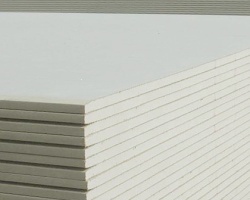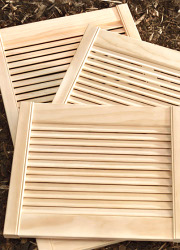 We’re finally having some damp-proofing work done on our lower ground floor – in what will become our awesome office. I say “finally” because it was supposed to be task #1 when we bought the house, finished before we moved in, but we’ve been living here for four months now…
We’re finally having some damp-proofing work done on our lower ground floor – in what will become our awesome office. I say “finally” because it was supposed to be task #1 when we bought the house, finished before we moved in, but we’ve been living here for four months now…
The room is damp because it’s partially underground on one wall but, more importantly, it was used as a bedroom for years and was made completely draft-proof. The chimney was blocked up, then covered with a wall, the floor was completely sealed with asphalt, all the windows/doors UPVC double-glazed and the outside walls were sealed with render – the damp air had nowhere to go but sit in the walls. Stone-built Victorian houses like this used to breathe, were built to breathe – but they suffocated it.
It’s already improved loads since we opened up the chimney but the work we’re doing now will stop the problem happening again. Unfortunately though, it involves a lot of destruction and mess – all the old water-logged plaster and plasterboard (drywall) has to be pulled away and replaced. The last lot of rumble we generated became filler for the sloped area we’ve levelled up in the garden but we don’t need any more for that. So what else can be done with it? Can it be used for anything more productive than its ability to take up space?
I seem to remember reading somewhere that about 15% of it is wasted during manufacture/installation and new stuff – offcuts – can be reclaimed and repressed into new boards. Can this be done with old boards too?
UPDATE: Oh, it seems plasterboard is now classed as hazardous waste in the UK so it can’t be landfilled – does that have an impact on its reuses?
 We all know wrapping paper is bad, m’okay? and that reusable gift bags are a far better alternative if you go in for that type of presentation and reusable gifts bags made out of recycled stuff from around the home are better yet – but how do you make them?
We all know wrapping paper is bad, m’okay? and that reusable gift bags are a far better alternative if you go in for that type of presentation and reusable gifts bags made out of recycled stuff from around the home are better yet – but how do you make them?


 We’ve had an email from Stuart:
We’ve had an email from Stuart: We’ve had a short but sweet (ha!) email to
We’ve had a short but sweet (ha!) email to  We’re finally having some damp-proofing work done on our lower ground floor – in what will become our awesome office. I say “finally” because it was supposed to be task #1 when we bought the house, finished before we moved in, but we’ve been living here for four months now…
We’re finally having some damp-proofing work done on our lower ground floor – in what will become our awesome office. I say “finally” because it was supposed to be task #1 when we bought the house, finished before we moved in, but we’ve been living here for four months now…















